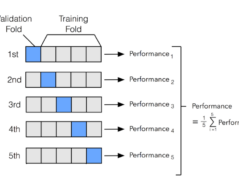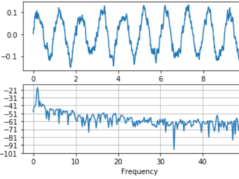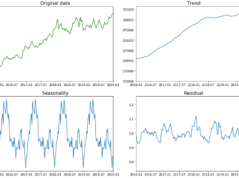
PCA-based Clustering: A Powerful Tool for Equity Markets
Introduction to PCA
Effective data management has assumed central importance across industries, particularly in the financial markets, in an era marked by data proliferation. A crucial technique in this regard, PCA-based Clustering, unlocks valuable insights into market dynamics. This blog post delves into this transformative tool and its profound implications for the Indian financial equity markets.
Understanding PCA-based Clustering
Principal Component Analysis (PCA), a statistical procedure, simplifies complex, high-dimensional data into more manageable forms. It identifies patterns, highlighting relationships between variables that might otherwise stay obscured.
PCA achieves this feat through the creation of an orthonormal matrix. It forms a set of new variables that preserve as much variance as possible. Here, eigenvalues and eigenvectors come into play, with the former indicating the amount of variance retained by each new variable or 'principal component', and the latter establishing the relationship between the original and the new variables.
Clustering adds another layer to this process. It groups similar data items, effectively forming a snapshot of a dataset’s intrinsic structure. In combination, PCA and Clustering simplify multi-dimensional data and reveal patterns in their structure.
The Power of PCA in Financial Equity Markets
The Indian financial equity markets, renowned for their complexity, stand to gain significantly from PCA-based Clustering. This technique proves invaluable in segmenting stocks into distinct sectors based on their behaviour. By uncovering the underlying patterns and hidden correlations, PCA-based Clustering allows for a more informed understanding of market dynamics.
This deeper understanding proves pivotal in strategic decision-making, especially in the realms of portfolio diversification and risk management. By clustering stocks into coherent sectors, one can better navigate the labyrinth of financial markets. It guides investors in selecting an optimal portfolio, balancing risk, and return according to their investment goals.
Limitations of PCA-based Clustering
PCA-based Clustering does not serve as an infallible panacea despite its apparent benefits. A primary limitation lies in its reliance on historical data for pattern recognition. While this can help understand past market trends, it does not guarantee accurate predictions.
Financial markets, after all, fall prey to a wide array of external influences. Policy changes, geopolitical events, and economic indicators, among others, can sway market behaviour, rendering patterns identified through PCA-based Clustering ineffective. Thus, while this tool can inform investment strategies, it should not be the sole guide.
A Practical Example: Unveiling Patterns in Mutual Funds
Consider a mutual fund, a portfolio comprising diverse stocks across sectors. A traditional analysis may classify these stocks based on broad sectors - Technology, Pharmaceuticals, Automobiles, etc. However, PCA-based Clustering digs deeper.
Let's assume that Tech and Pharma stocks are vulnerable to USD-INR exchange rate fluctuations. PCA-based Clustering will identify this correlation, presenting a more nuanced understanding of the portfolio's behaviour. Such insights empower investors to make informed decisions, optimizing their portfolio performance.
Example Python Code for PCA Clustering
Let's take a dataset with closing prices of different sector stocks and USD-INR exchange rates. We'll use Principal Component Analysis (PCA) for dimensionality reduction and KMeans for clustering.
import pandas as p
import numpy as np
from sklearn.decomposition import PCA
from sklearn.preprocessing import StandardScaler
from sklearn.cluster import KMeans
import matplotlib.pyplot as plt
# Load the dataset (replace with the path to your actual data)
data = pd.read_csv('financial_data.csv')
# Assume that our dataframe has columns: 'Date', 'Tech', 'Pharma', 'Auto', 'USD-INR'
# Set 'Date' as the index
data.set_index('Date', inplace=True)
# Log returns provide a better measure of growth over time, let's calculate that
log_returns = np.log(data / data.shift(1))
# Standardize the features to have mean=0 and variance=1
scaler = StandardScaler()
rescaled_data = scaler.fit_transform(log_returns.dropna())
# Create PCA object
pca = PCA()
# Fit the standardized data to the pca
pca.fit(rescaled_data)
# Let's say we want to keep 3 principal components
pca = PCA(n_components=3)
principal_components = pca.fit_transform(rescaled_data)
# Now, we'll use KMeans for clustering the stocks based on these principal components
kmeans = KMeans(n_clusters=3)
clusters = kmeans.fit_predict(principal_components)
# Let's create a DataFrame that will have the PCA and clusters information
pca_clusters_df = pd.DataFrame(data = principal_components, columns = ['Principal Component 1', 'Principal Component 2', 'Principal Component 3'])
pca_clusters_df['Cluster'] = clusters
print(pca_clusters_df)
This code does not directly point out the correlation between sectors or exchange rate fluctuations, as PCA tends to generalize the data. However, it does reveal clusters that may show similar behaviour due to such correlations.
To validate this, you would need to examine the constituent stocks of each cluster, understand their sectoral classifications, and study the potential causes behind their similar behaviour (like similar reactions to exchange rate fluctuations). This would require domain knowledge and further in-depth analysis.
Conclusion on PCA Clustering
PCA-based Clustering, though not without its limitations, holds transformative potential for the Indian financial equity markets. It serves as a beacon in the complex world of financial data, illuminating patterns that can guide strategic decision-making. By integrating this tool, investors and financial analysts can unlock a deeper understanding of market dynamics, enabling them to navigate the market labyrinth with increased precision.
While PCA-based Clustering can reveal the hidden patterns in the intricate design of financial markets, it also underscores the importance of a balanced approach. It should complement, not replace, other analytical tools and expert insights. As we strive to decode the financial markets, let us remember - every tool, every technique brings us a step closer to unravelling its mystery.
Follow Quantace Research
-------------
Why Should I Do Alpha Investing with Quantace Tiny Titans?
1) Since Apr 2021, Our premier basket product has delivered +50.4% Absolute Returns vs the Smallcap Benchmark Index return of +11.2%. So, we added a 39% Alpha.
2) Our Sharpe Ratio is at 1.4.
3) Our Annualised Risk is 20.1% vs Benchmark's 20.4%. So, a Better ROI at less risk.
4) It has generated Alpha in the challenging market phase.
5) It has a good consistency and costs 6000 INR for 6 Months.
-------------
Disclaimer: Investments in securities market are subject to market risks. Read all the related documents carefully before investing. Registration granted by SEBI and certification from NISM in no way guarantee performance of the intermediary or provide any assurance of returns to investors.
-------------
#future #machinelearning #research #investments #markets #investing #like #investment #assurance #management #finance #trading #riskmanagement #success #development #strategy #illustration #assurance #strategy #mathematics #algorithms #machinelearning #ai #algotrading #data #financialmarkets #quantitativeanalysis #money






